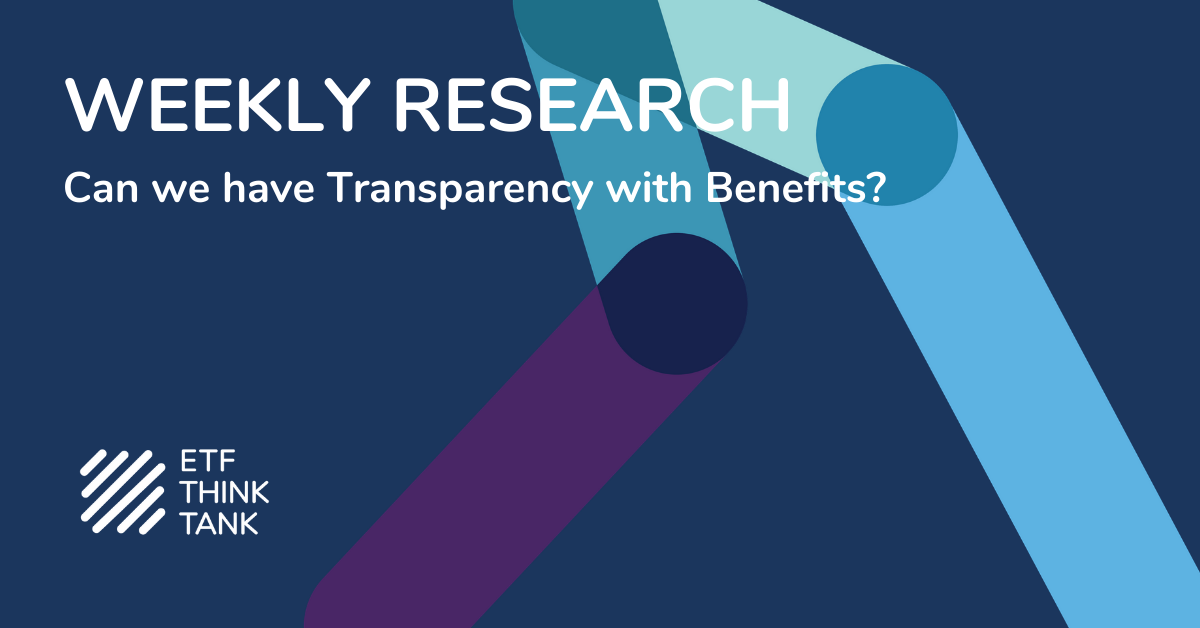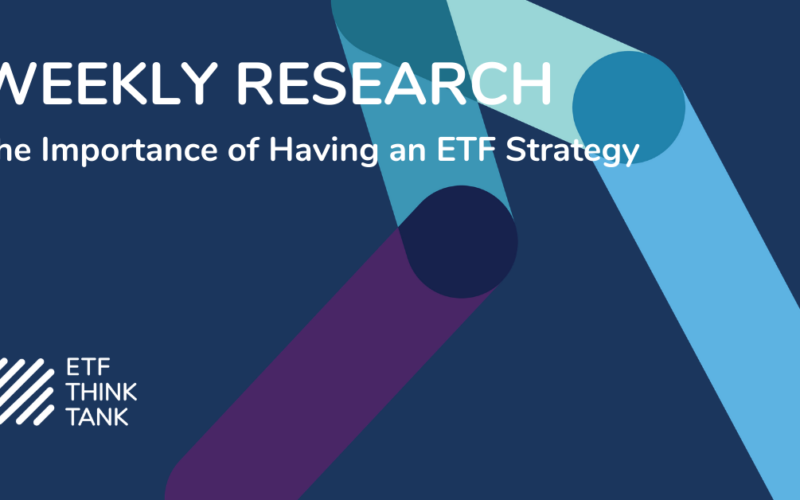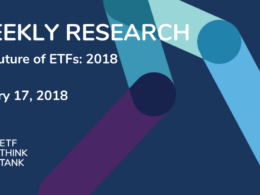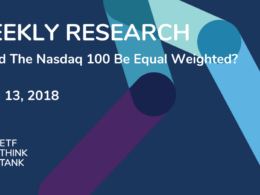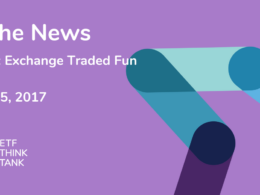What is the client experience like, and how can having an ETF strategy help?
As we approach Thanksgiving and consider ways to express our gratitude, we are reminded by the wealth advisors we serve, and how focusing on the client experience is a form of gratitude that goes beyond gifts or special events. Providing clients with a great experience can be as simple as delivering the expected investment outcome. For many clients, that is the gift.
Taking it a step further, we will use the iShares Risk Allocation ETFs. As of November 15, 2019, year-to-date performance numbers of the iShares Aggressive ETf (ticker: AOA) is up 18.93%, the iShares Moderate Risk ETF (ticker: AOM) is up 13.49% and the iShares Conservative ETF (ticker: AOK) is up 12.18%. Given the negative headlines at the end of 2018, we see this outcome is much better than what the analysts forecasted and probably ahead of what most wealth advisors planned to return in 2019.
This better than expected performance, reinforces our position in our last research note that sticking with a long-term plan and investments strategy is critical. Ironically, like the joke about doctors making the worst patients, financial planners and wealth advisors often do not spend enough time planning for the future of their businesses. That can take the form of avoiding succession planning, not formalizing a marketing strategy, or failing to prepare and implement an investment strategy.
The ETF Think Tank is an investments hub. We focus on ETFs because we believe they are great investment vehicles for wealth advisors to meet their clients’ investment objectives in a low-cost, transparent, liquid, tax-efficient wrapper. Having been in the ETF industry since its inception, we have seen how the top 5 firms take a majority of market share. This is why we offer due diligence meetings with the portfolio managers of high-conviction ETF firms. We want advisors to have access to the most innovative and viable ETFs available today. Another objective of the ETF Think Tank is to provide value to our readers by sharing our point of view on ETF industry topics, like the recent approval of Non-Transparent ETFs.
Non-Transparent Active ETFs were approved by the SEC
Non-Transparent Active ETFs were officially approved by the SEC last week with a target release date of December 10, 2019. This indicates a third generation of evolution and growth in the ETF market. The differences between the Non-Transparent/Semi-Transparent structures is subtle, and the path to success will be challenged by platform access, compliance, and the need to be defined by alpha. There simply is no magic bullet in this business. ETFs are about transparency, tax efficiency and lower costs for investors. We are optimistic that this movement will encourage new launches and innovative solutions in the marketplace. We are hopeful that the ETF wrapper will not take the blame for the hurdles (or potential failures) by new entrants, to effectively communicate the differences in transparency, trading and investment methodologies. In an ideal world, investors, platform due diligence teams, and the constituents of the ETF Ecosystem in general, will give this next phase of development some runway.
Potential Implications for Non-Transparent ETF Issuers to Consider
New entrants assimilating into the ETF Ecosystem will have to be careful in their next steps, or they run the risk of being viewed as not being of value. While other ETFs are fully transparent, this next generation will have marketing challenges such as: how to measure client success, how do they efficiently trade, what is their tracking error, and what is the timeframe for delivering Alpha. The Non-Transparent ETF structure only offers clearly defined benefits in the way of tax efficiency, similar to Transparent ETFs. In addition, as the team at PIMCO can attest, Active tends to have a “personality,” which can be another type of risk and require an explanation of differences between the mutual fund and the ETF solution. Note that PIMCO’s successful Total Return Mutual Fund remains at $68 billion (PTTRX) in AUM and the similar and “Fully Transparent” PIMCO Total Return ETF is below $3 billion, despite the outperformance. According to Bloomberg, the PIMCO Active Bond ETF Total return since inception (March 1, 2012), is 39.77% vs. the PIMCO comparable returns of 29.7% and 27.22%. ETF strategists and wealth advisors can now include Non-Transparent ETFs in their portfolio models, but positioning a Non-Transparent ETF will remain a challenge.

The What and the Why of Transparent vs. Non-Transparent ETFs
ETF Nerds need answers, and in a solid article published by Brown Brothers Harriman entitled, “Exchange Thoughts – New Wave of Active ETFs Shield the Secret Sauce,” provides a brief overview of the differences between Transparent and Non-Transparent ETFs.
We sense a certain level of irony in the SEC’s approval. Defending the, “secret sauce,” is a fair way to explain the intention of most of the portfolio managers who wish not to disclose their holdings, but this is not in the case of Fully Transparent ETFs like, Davis Advisors and ARK Investing. We’ve selected two equity firms because that is where the, “secret sauce” is most protected, but not represented by the largest market share.
As a reminder, Active represents about 12% of the ETFs in the universe (287), but only 2.23% of the AUM or $95 billion. Fixed income is about $70 billion. Most importantly, and in our view, this may be the actual, “secret sauce:” Active represents 5.77% of the revenues in ETFs with an average fee of 49.4 bps. In other words, the “secret sauce” is not so much about holdings as it is about protecting the fees. Equity fees are at a weighted average of 83 bps across $11.5 billion of the $4,157 trillion in the ETF market.
At the core, this is part of the debate about Semi-Transparent ETFs. Afterall, why cannibalize your core franchise, if there is only a small buyer of this category? We believe the answer lies with the fact that Smart Beta Equities have about $1.1 trillion of the market share or about 26% of the AUM and this fee is about 24 bps.


We wish all of you a wonderful Thanksgiving.








